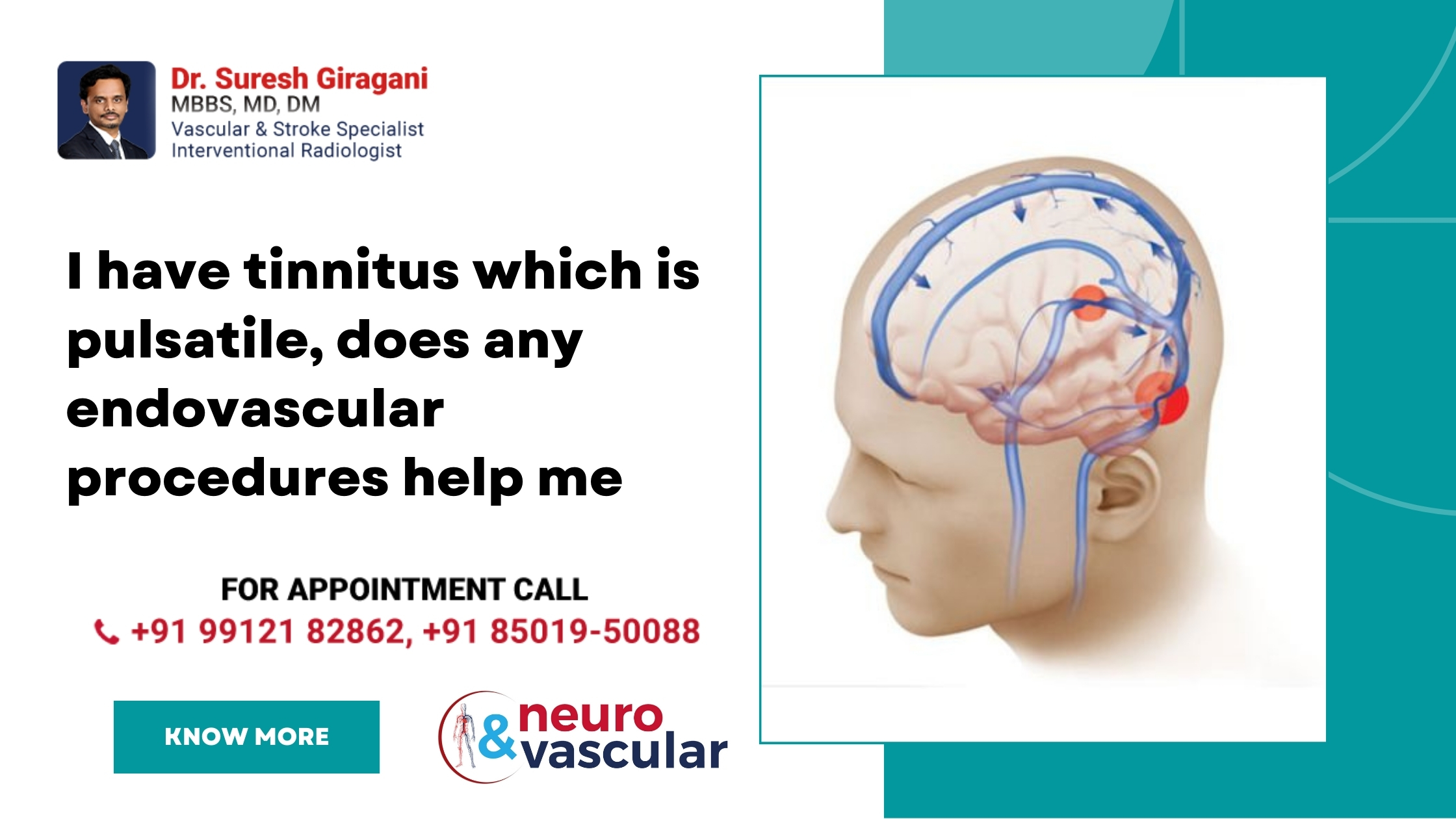
I have tinnitus which is pulsatile, does any endovascular procedures help me?

Living with pulsatile tinnitus can be incredibly challenging. This condition, characterized by hearing a rhythmic sound that often matches your heartbeat, can disrupt daily life and significantly affect your well-being. If you are experiencing pulsatile tinnitus, you might wonder if there are any effective treatments available, including endovascular procedures. Let’s explore what pulsatile tinnitus is, its potential causes, and how endovascular procedures might help.
What is Pulsatile Tinnitus?
Pulsatile tinnitus is a type of tinnitus where the individual hears a rhythmic noise, usually in sync with their heartbeat. Unlike the more common form of tinnitus, which typically manifests as a continuous ringing or buzzing, pulsatile tinnitus can be particularly distressing due to its pulsating nature. This condition can vary in severity, from being a mild nuisance to a debilitating issue that affects sleep, concentration, and overall quality of life.
Causes of Pulsatile Tinnitus
Pulsatile tinnitus is often linked to issues with blood flow in the vessels near the ear. Common causes include:
- Idiopathic Intracranial Hypertension: Increased pressure in the brain’s blood vessels can cause pulsatile tinnitus.
- Venous Sinus Stenosis: Narrowing of the venous sinuses in the brain can lead to altered blood flow patterns, resulting in pulsatile tinnitus.
- Dural arteriovenous fistulae: They can form as as sequelae to blocks in cerebral veins (CVT). Dural arteriovenous fistulae around the brain can cause vascular tinnitus.
- Arteriovenous Malformations (AVMs): These are abnormal connections between arteries and veins that can disrupt normal blood flow.
- Carotid Artery Stenosis: Narrowing of the carotid arteries can create turbulent blood flow, producing a pulsatile sound.
- Vascular Tumors: Tumors such as glomus tumors can increase blood flow in the ear region, leading to pulsatile tinnitus.
- Atherosclerosis: Build-up of plaques in the arteries can lead to changes in blood flow that are perceived as pulsatile tinnitus.
Other potential causes include high blood pressure, head or neck tumors, and certain types of anemia. In some cases, the exact cause of this may remain unknown, which can complicate treatment efforts.
Endovascular Procedures for Pulsatile Tinnitus
Endovascular procedures are minimally invasive techniques used to diagnose and treat various vascular conditions. These procedures involve accessing the vascular system through small incisions, typically in the groin or arm, and using catheters and other instruments to treat the problem from within the blood vessels. Here’s how these procedures can help with pulsatile tinnitus:
- Angiography
Angiography is a diagnostic procedure that involves inserting a catheter into the blood vessels to take detailed images. This procedure can help identify the exact cause of pulsatile tinnitus, such as AVMs or venous sinus stenosis. During angiography, a contrast dye is injected into the blood vessels, making them visible on X-ray or other imaging modalities. This detailed view can help doctors pinpoint abnormalities that might be contributing to the tinnitus.
- Embolization
If a vascular tumor, dural AVF or AVM is causing the tinnitus, embolization can be used to block the abnormal blood vessels. During this procedure, a catheter is guided to the problematic vessel, and a substance (such as coils, glue, or particles) is injected to close it off, reducing the abnormal blood flow that causes the tinnitus. Embolization is particularly effective for treating dural AVF, glomus tumors and certain types of AVMs.
- Stenting
For conditions like carotid artery stenosis or venous sinus stenosis, placing a stent can help. A stent is a small mesh tube inserted into the narrowed part of the vessel to keep it open, improving blood flow and potentially reducing or eliminating the pulsatile noise. Stenting is often used in conjunction with balloon angioplasty, where a small balloon is inflated to widen the narrowed area before placing the stent.
Effectiveness and Considerations
Endovascular treatments can be highly effective for certain causes of tinnitus, particularly those related to vascular abnormalities. However, their success depends on accurately diagnosing the underlying cause. A thorough evaluation by a specialist, often involving imaging studies like MRI, CT scans, or angiography, is crucial to determine if you are a candidate for these procedures.
The success of endovascular treatments also depends on the specific nature and location of the vascular abnormality. For example, embolization might be highly effective for treating a dural AVF.,but less so for a diffuse AVM that affects a larger area. Similarly, stenting can be very effective for venous sinus stenosis, but might not address other potential causes of pulsatile tinnitus.
Conclusion
In conclusion, while endovascular procedures can be highly effective for treating pulsatile tinnitus caused by vascular abnormalities, it’s important to undergo a thorough evaluation to determine the best course of action. Advances in medical imaging and minimally invasive techniques have made it possible to treat many of the underlying causes of pulsatile tinnitus effectively, offering hope to those affected by this challenging condition. consult with our best interventional radiologist explore whether an endovascular approach might be the right solution for you. With the right diagnosis and treatment, you can find relief and improve your quality of life.
About the Author:

Name: DR . SURESH GIRAGANI
INTERVENTIONAL RADIOLOGIST
DR. SURESH GIRAGANI CONSULTANT INTERVENTIONAL RADIOLOGIST at Apollo hospitals Jubilee Hills has more than sixteen years of clinical experience in vascular interventions with a special interest in neurovascular and peripheral vascular disease interventional procedures.